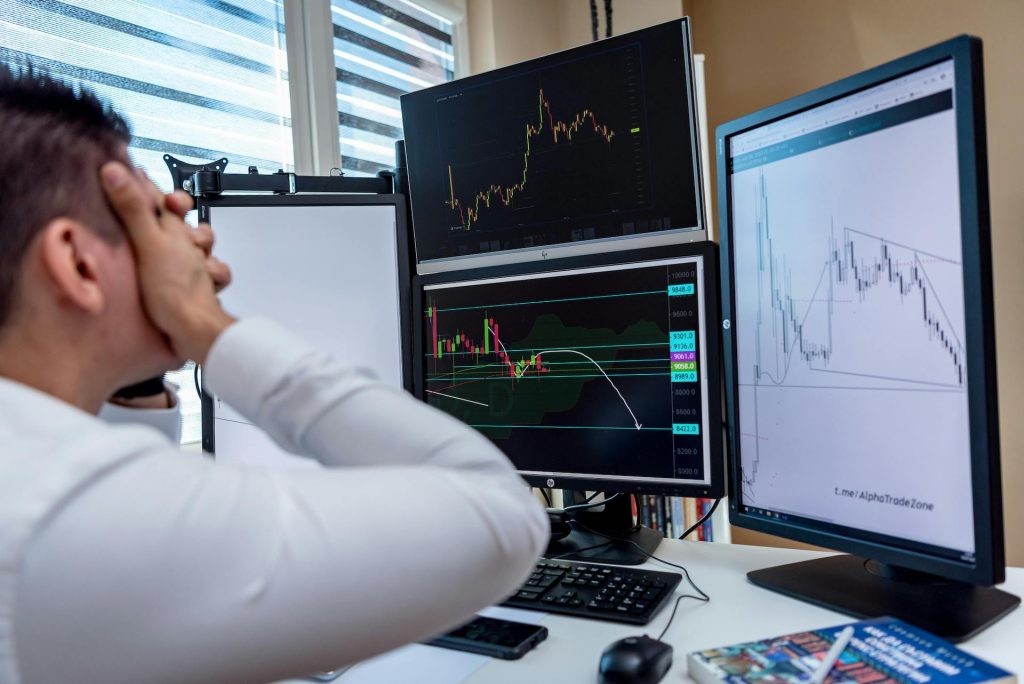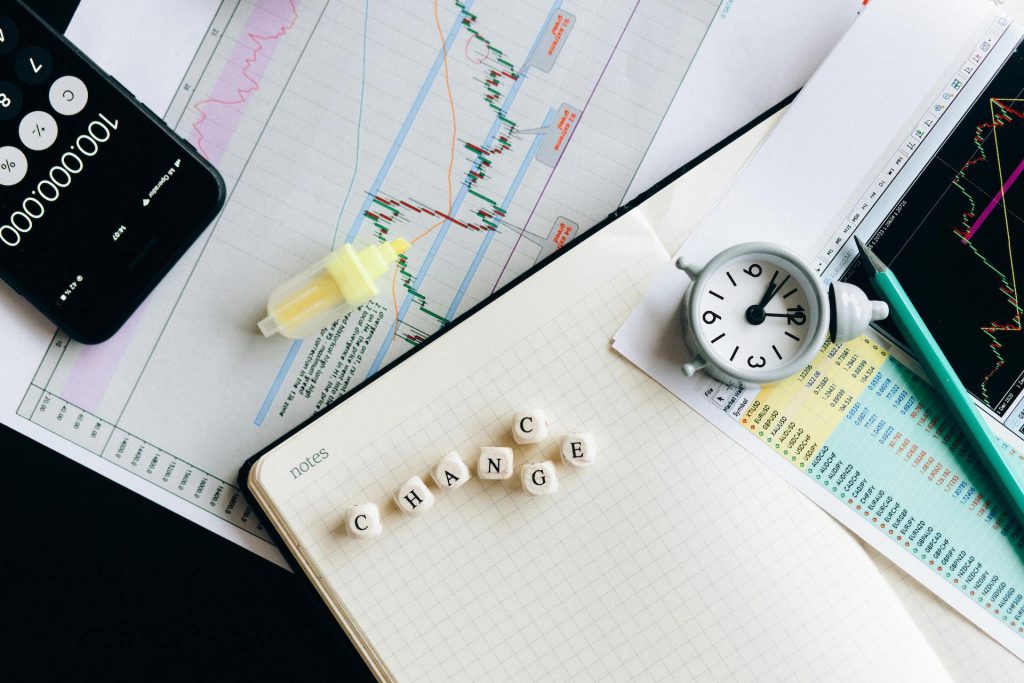Trading in the forex market can be advantageous but also inherently risky, leading to natural feelings of fear and anxiety. Fear in trading typically arises from the potential for financial loss—a reality all traders face. While fear is a crucial survival mechanism, it can hinder one’s ability to stick to a trading plan and make rational decisions.
This article will explore strategies to manage fear in forex trading. By understanding fear’s role, identifying its sources, and using it constructively, you can transform fear from a hindrance into a powerful tool for improving your trading decisions.
Understanding the Role of Fear in Forex Trading
Fear is a normal part of human nature, functioning as a primary survival mechanism. It helps us recognise danger and take appropriate actions, particularly useful in high-stakes situations like forex trading. However, when fear becomes excessive or irrational, it can interfere with good trading habits, leading to impulsive decisions that go against your predetermined trading plan.
For example, fear might cause you to close a position prematurely. Often, traders witness their fears play out as they watch the market support levels hold and prices surge upward shortly after closing, realising they closed a high-probability trade too soon. This scenario highlights why understanding and managing fear in trading is essential.

Recognising When Fear Becomes a Problem in Trading
While fear can help you avoid potential losses, ensuring it doesn’t drive your actions is crucial. The real issue arises when fear triggers unnecessary decisions, like exiting trades too early or abandoning your trading plan. To prevent fear from becoming a disruptive force, ask yourself these questions whenever it starts to surface:
- Why am I feeling uneasy?
Determining whether the unease is due to genuine concerns or a fear of loss is key. - Are there legitimate reasons to exit this trade?
Evaluate whether fundamental or technical factors are signalling a potential downturn.
Addressing these questions can help you better understand your emotions and leverage fear to support sound trading decisions.
3 Strategies to Effectively Manage Fear in Forex Trading
1. Embrace Fear as Part of the Trading Journey
Fear is universal in trading. Rather than viewing it as a weakness, accept fear as an inevitable part of the trading experience. Embracing fear allows you to deal with it openly without letting it dominate your decision-making.
Recognise that fear doesn’t need to lead to panic. Accepting it as part of the process allows you to pause, analyse the situation, and make calculated adjustments rather than reacting impulsively.
2. Identify the Source of Your Fear
The next step is to pinpoint exactly where your fear is coming from. Not all fear in trading is irrational. Sometimes, it responds to genuine changes in the market landscape, such as breaking support levels or shifts in economic data. Other times, fear may arise from psychological factors, like previous losses or anxiety about potential outcomes.
Distinguishing between rational and irrational fear can help you respond appropriately. For instance:
- Rational Fear: Based on market data, technical signals, or fundamental news, rational fear warns that conditions may be unfavourable.
- Irrational Fear: This fear stems from emotional triggers unrelated to actual market conditions, like past mistakes or negative thoughts.
By identifying the cause, you can address rational fears with a revised trading plan and dismiss irrational ones to stay focused on your strategy.
3. Use Fear to Make Better Trading Decisions
Instead of letting fear dictate your actions, use it as a tool for improvement. Once you identify the root cause, adjust your trading strategy to account for any real risks. For example, if a shift in fundamental factors indicates a possible trend reversal, you might consider reducing your position size or setting tighter stop losses.
Through regular self-reflection, you can turn fear into a guide for growth:
- Revisit Your Trading Plan: When fear arises, reviewing your plan can help ground you. Your trading plan should outline when to exit a trade or how to respond in specific scenarios. Referring back to it can provide clarity and reduce unnecessary worry.
- Make Informed Adjustments: If fear points to actual risks, make strategic adjustments rather than impulsively closing a position. This way, fear serves a constructive role in your decision-making process.

Practical Tips for Managing Fear in Forex Trading
Analyse Your Fear Patterns
Identify patterns in your fear responses. Keeping a trading journal can help you record your emotions alongside your trades, revealing tendencies like premature exits or reluctance to enter a market. Reviewing this information over time can help you address recurring fears with specific strategies.
Practice Mindfulness and Stress Management Techniques
Mindfulness techniques can help you manage the emotional responses associated with trading. Breathing exercises, meditation, and regular breaks can clear your mind and allow you to approach trades with a calmer perspective.
Build Confidence Through Education and Practice
Fear often stems from a lack of confidence. You can build confidence in your trading abilities by continuing to learn and improve your skills. Participating in demo trading, studying market trends, and reviewing case studies are great ways to reinforce your knowledge and skills, which can significantly reduce fear in live trading.
Common Trading Scenarios Where Fear Arises
Several scenarios in forex trading commonly trigger fear:
- Entering a Volatile Market: Rapid price fluctuations can make traders anxious about potential losses, leading to hesitation or impulsive entries and exits.
- Experiencing a Series of Losses: Consecutive losses often amplify fear, making traders wary of future trades and potentially leading to overcautious or reactionary behaviour.
- Holding a Position Overnight: Some traders feel uneasy about holding positions away from the screen, fearing they might miss important shifts or fail to respond quickly.
By preparing for these scenarios, you can develop strategies to manage fear, such as adjusting position sizes in volatile markets, practising disciplined risk management in trading after losses, and setting stop-loss levels for overnight positions.
Conclusion: Transform Fear Into a Tool for Better Trading
Fear in forex trading doesn’t have to be a barrier to success. By embracing it, understanding its sources, and using it to refine your strategy, you can harness fear as a valuable tool. Remember to evaluate your emotions carefully and distinguish between rational and irrational fears. These practices will strengthen your confidence and improve your decision-making abilities with time.
Ultimately, transforming fear into a constructive force allows you to make more calculated, rational choices in your trading journey. By following these steps, you can reduce fear’s impact and focus on building a successful, sustainable trading strategy.
Mastering your emotions, particularly fear, can significantly improve your chances of achieving your trading goals. At Vestrado, we understand that the journey to confident trading is built step-by-step. By facing your fears head-on and transforming them into a source of strength, you set yourself up for more informed and disciplined decision-making.
Remember, every trader experiences fear—how you handle it sets you apart. With Vestrado’s resources and community support, you’re not alone in this journey. Embrace the process, refine your strategy, and empower yourself to trade clearly and confidently. Ready to take control? Begin your path to fearless trading with Vestrado today!





